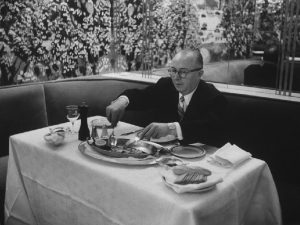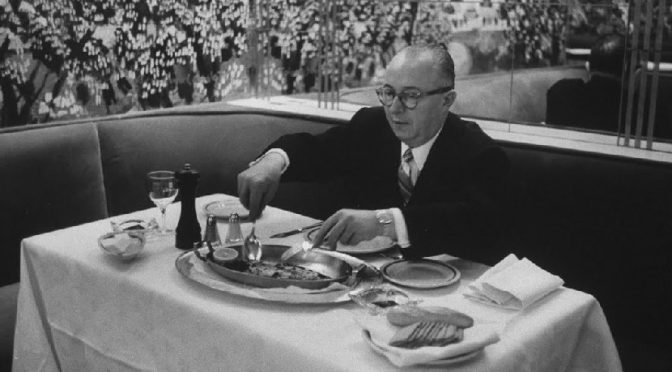This one maybe goes in the “if” category. La Côte Basque has been in the news a lot lately. La Côte Basque is a chapter in an unfinished novel by Truman Capote named after a famed New York restaurant – it is about New York socialites and is being brought to the small screen as part of Feud: Capote vs the Swans. Of course, the name La Côte Basque is intriguing to someone who runs a blog about all things Basque. The restaurant was opened by Henri Soulé who was from very near the Basque Country. Several places refer to him as being Basque, though I’ve had a hard time definitively pinpointing if he was Basque or not. If anyone has more information, I’d more than welcome it. In any case, it is an interesting story and Soulé certainly lived and worked in the Basque Country.

- Soulé was born in 1903 in Saubrigues, France, just slightly north of Baiona and Biarritz though strictly outside of the Basque province of Lapurdi. In fact, Wikipedia says he was born in Baiona, but, when he died, Soulé requested to be buried in Saubrigues, which strongly hints at his strong connection to that town. And other references say he was born in Saubrigues. Perhaps incidentally, Soule is the French name for the Basque province of Zuberoa…
- In any case, when he was fourteen years old, Soulé left home and began working as a busboy at the Continental Hotel in Biarritz. He had been recommended by his uncle who was a baker in Baiona. It wasn’t long before he was in Paris where, by the age of 21, he became the city’s youngest maître d’hôtel. In 1926, he worked in London, at the Tocadero Restaurant in Piccadilly Circus with one goal being to learn English.
- In 1939, he was asked to run Le Restaurant Français which was part of the French pavilion at the World’s Fair in New York City. When World War II began, he decided to stay in the United States and, in 1941, he opened his first restaurant, Le Pavillon. It became “the undisputed top-ranked establishment in America” and “produced this country’s finest French cuisine.”
- In 1958, he opened La Côte Basque on the site of the old Le Pavillon, which had moved to another location. The walls were painted with murals of Donibane Lohitzune (Saint-Jean-de-Luz). When it started taking clientele away from Le Pavillon, Soulé sold it but he bought it back only a few years later. It was only a year later that he died of a heart attack, either in the men’s room or on the phone yelling at a union official. When he died, there were some twelve restaurants that had grown out of Le Pavillon.
- As food writer Patric Kuh describes him, “He was Basque, and he liked to eat flaked salt cod with warm boiled potatoes and chopped parsley.” He was once described by food critic Gael Greene as “pasty faced… with owl eyes,” but also as a “showman, snob, perfectionist, martinet, con-man, wooer and wooed master of haute cuisine.”
- Soulé was also known to be tyrannical in both his dealings with his staff and his clientele. He supposedly hired criminals to intimidate his staff when they tried to strike for better wages and hours. He controlled where customers sat – he wanted to “bestow” the best, most visible seats to those he deemed worthy and favored. Those who he did not favor got seated in “Siberia.” And he cowed to no one, even having a public spat with the Kennedys during John F. Kennedy‘s presidential run about a photographer he refused to evict.
- When he died, he left his two restaurants to his widow Olga, who was living in Baiona, and his sister Madeleine. This was surprising to those who knew him, as no one even knew he had a family back in France. They had all assumed that Henriette Spalter, who started as a coat-checker, was his wife, though in reality she was his mistress. Spalter bought La Côte Basque and continued its operation until 1979, when she sold it. It closed permanently as La Côte Basque in 2004. Le Pavillon didn’t last nearly so long, closing in 1971.
Primary sources: Ten Restaurants That Changed America by Paul Freedman, Henri Soulé, Wikipedia; Dining at the Pavillon by Joseph Wechsberg
Discover more from Buber's Basque Page
Subscribe to get the latest posts sent to your email.


